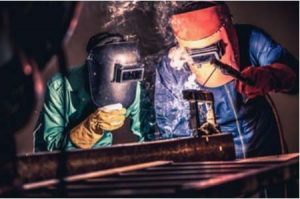 Hidden Dangers
Hidden Dangers
Welding is a dangerous occupation, but besides the obvious dangers, hidden dangers include the production of harmful metal fumes and gas by-products. At high temperatures such as in the welding, metals reach over one thousand degrees, and many release chemicals known to cause cancer. Welding-specific exposures have been connected to an increase of the risk of lung, bladder and kidney cancers, as well as COPD, metal fume fever, and Hexavalent chromium and manganese-related illnesses.
Effects of Fume Exposure
The acute effects of breathing welding fume include eye, nose, and throat irritation, dizziness and nausea. Prolonged exposure may cause lung damage and various types of cancer. Reducing workers’ exposure to welding fume is a priority for their health and safety.
How to Reduce Welder Exposure
It is important to look at OSHA standards applicable to the specific type of welding being performed, as well as the materials being used in each welding operation. Employers are obligated to provide specific training on the work, and to make sure proper respiratory protection and safety precautions are provided to and used by welders.
Other ways of reducing exposure to welding fume include cleaning off surface coatings before welding, positioning workers upwind from fume and gases, providing a ventilation system to remove fumes and gases from the welder’s breathing zone, and considering other, less toxic materials. If workers must weld in confined spaces or fume cannot be reduced to safe levels, respiratory protection may be required.
BEFORE YOU WELD… KNOW THE RISKS AND TAKE PRECAUTIONS
Download flyer: STOTW_1201_Welding_Fumes_Safety Download Spanish flyer: STOTW_1201_Welding_Fumes_Safety_esp

